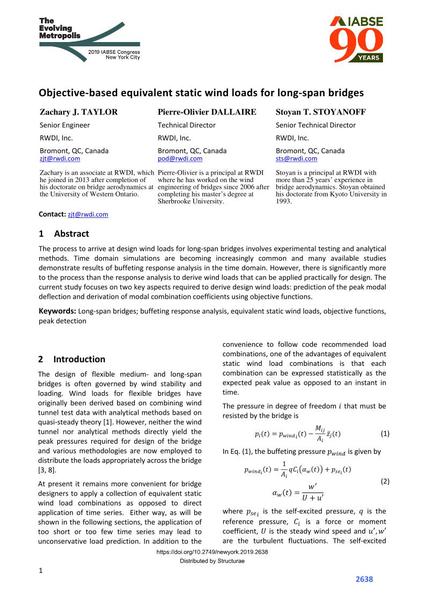Objective-based equivalent static wind loads for long-span bridges

|
|
|||||||||||
Bibliographic Details
| Author(s): |
Zachary J. Taylor
(RWDI, Inc.)
Pierre-Olivier Dallaire (RWDI, Inc.) Stoyan T. Stoyanoff (RWDI, Inc.) |
||||
|---|---|---|---|---|---|
| Medium: | conference paper | ||||
| Language(s): | English | ||||
| Conference: | IABSE Congress: The Evolving Metropolis, New York, NY, USA, 4-6 September 2019 | ||||
| Published in: | The Evolving Metropolis | ||||
|
|||||
| Page(s): | 2638-2643 | ||||
| Total no. of pages: | 6 | ||||
| DOI: | 10.2749/newyork.2019.2638 | ||||
| Abstract: |
The process to arrive at design wind loads for long-span bridges involves experimental testing and analytical methods. Time domain simulations are becoming increasingly common and many available studies demonstrate results of buffeting response analysis in the time domain. However, there is significantly more to the process than the response analysis to derive wind loads that can be applied practically for design. The current study focuses on two key aspects required to derive design wind loads: prediction of the peak modal deflection and derivation of modal combination coefficients using objective functions. |
||||
| Keywords: |
long-span bridges buffeting response analysis equivalent static wind loads objective functions peak detection
|
||||
